This post is a follow up to my previous post about the recordings made by the GNU Radio team at Allen Telescope Array on December 12 and 13. In that post I looked at the telemetry decoding in two full pass observations done last weekend, each of them lasting around 4 to 5 hours.
In this post, I will study the signal polarization in those recording, following the same method as in my previous post about the Chang’e 5 polarization. In these recordings, only the signal at 8471.2 MHz from the orbiter was active.
2020-12-12
The recording on 2020-12-12 was made between TEI-1 (trans-Earth injection 1) and TEI-2. The spacecraft was in an elliptical lunar orbit waiting for the appropriate moment to execute the burn that would place it on an escape trajectory. As I commented in my previous post, the tracking was done by hand due to the lack of adequate ephemeris. This causes variations in signal strength, and to a lower extent, errors in the polarization measurement, due to the spacecraft being received off-axis.
Cross-spectra for the recorded IQ data were computed with the ce5_480k_crossspectrum.grc GNU Radio flowgraph, and then plotted and studied in this Jupyter notebook.
The figure below shows the waterfall of the recording (using Stokes \(I\)). We can see the asymmetric Doppler due to the elliptical orbit, and the changes in signal strength and Moon noise as I attempted to improve the tracking by moving the dish pointing slightly. The spacecraft is locked to a groundstation during most of the observation, as indicated by the idle telecommand loopback at +/- 8 kHz from the main carrier. Some time before 21:00 UTC there is a groundstation unlock.
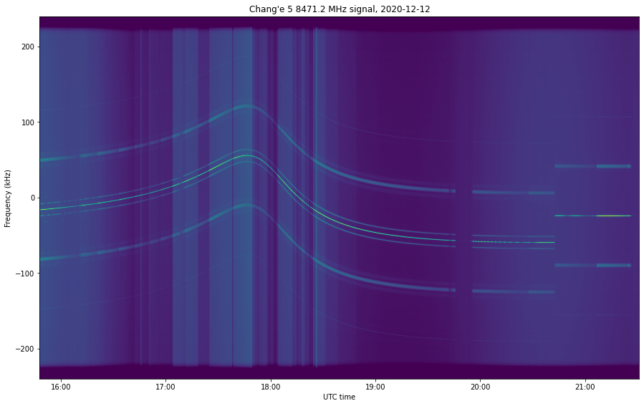
The signal strength shows the typical decay until I adjusted again the dish position. In this case, the dish was pointed manually to a constant right ascension and declination, so the need to update the pointing frequently comes both from the orbit of the spacecraft around the Moon and from the movement of the Moon with respect to the stars. The gap before 20:00 UTC is due to a mistake I made with the tracking.
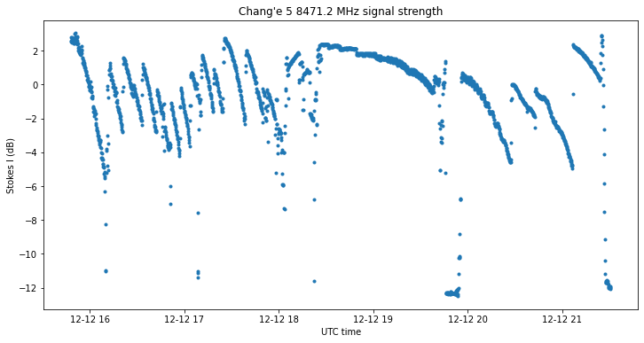
The fraction of polarized intensity (Stokes \(P/I\)) shows that the SNR is quite good for accurate polarization measurement.
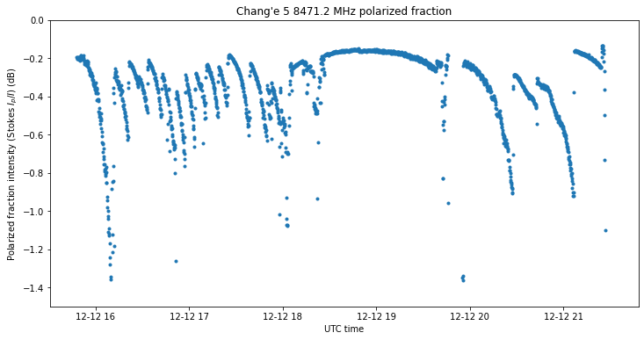
The figure below shows Stokes \(V/I\), which gives the fraction of circularly polarized intensity. Positive values indicate RHCP.
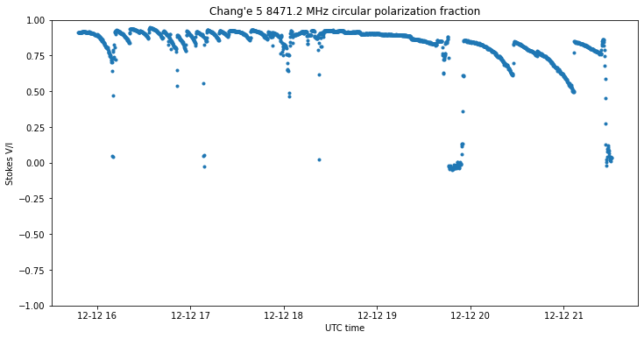
We see that the signal is close to an ideal RHCP signal. This is interesting, because in my previous polarization study we saw that the polarization of the different signals of Chang’e 5 was time varying and elliptical. This suggested that signals come from different RHCP patch antennas placed on different sides of the spacecraft, so we see different polarizations depending on the off-boresight angle.
The fact that in this observation the polarization is close to RHCP suggests that the spacecraft attitude was set to point the antenna directly towards Earth. This could explain why the only signal detected was the one at 8471.2 MHz, since the other signal from the orbiter at 8486.2 MHz would probably be transmitted from an antenna facing away from Earth, so it would make sense to turn this transmitter off.
The next figure shows the residual linear polarization. Here we note an interesting change in the polarization angle as the linear polarization crosses through zero shortly before 18:00 UTC.
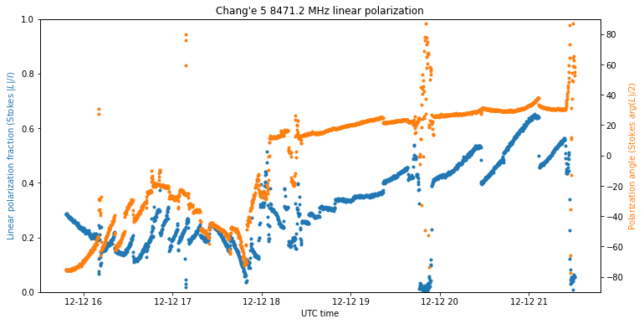
2020-12-13
The recording on 2020-12-13 was made after TEI-2, as the spacecraft was on an escape orbit to cross the Moon-Earth Hill sphere. The tracking was also done by hand, but I didn’t need to update the dish pointing as much as on the 2020-12-12. The data was processed in the same way as for the 2020-12-12 recording, and analysed in this Jupyter notebook.
The waterfall shows a slow Doppler drift, a groundstation unlock near the end of the observation, and an interesting change in the amplitude of the noise floor.
I am not sure about what causes the noise floor to change so much, since the pointing was almost kept to a constant right ascension and declination, and the changes in the noise do not correlate with the changes in the dish pointing. It may happen that the noise is ground noise coming from dish spillover, since the elevation was low due to the low declination of Chang’e 5.

The signal strength shows slow variations of a few dB caused by dish pointing changes. The signal strength does not correlate with the changes in the noise floor, so this rules out the hypothesis of changes in system gain.
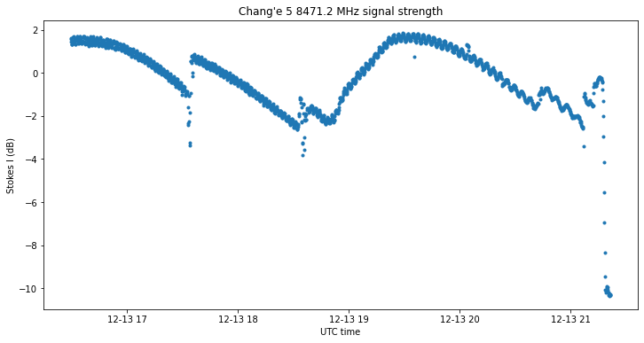
The polarized fraction follows quite well the signal strength curve, showing that the cause for depolarization is the (unpolarized) noise when the SNR decreases.
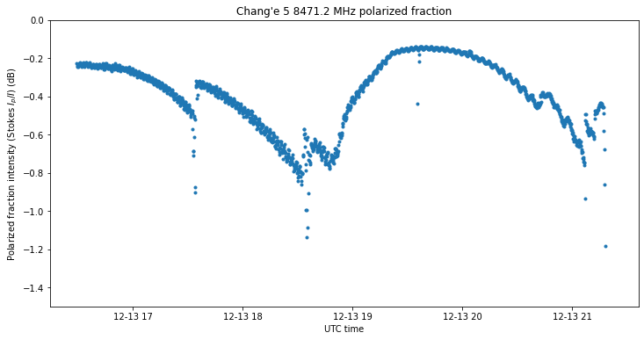
As in 2020-12-12, the signal matches ideal RHCP quite well. This supports the hypothesis of an attitude that aims the antenna directly towards Earth.

There is some noticeable linear polarization at the beginning of the observation, but later it decreases to low levels. The angle of the polarization is around -80º for most of the observation, except for an excursion around 19:30 UTC, which incidentally matches an increase in signal strength.
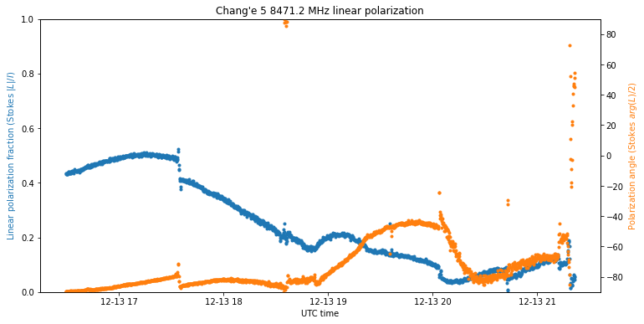
One comment